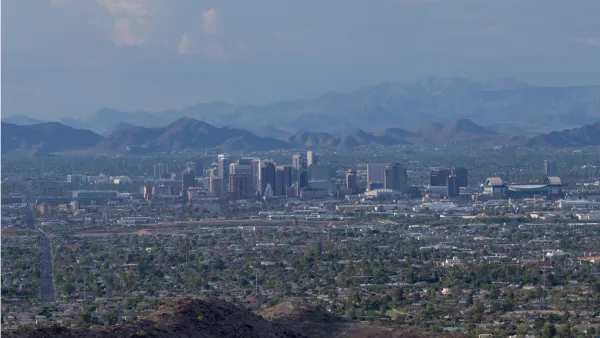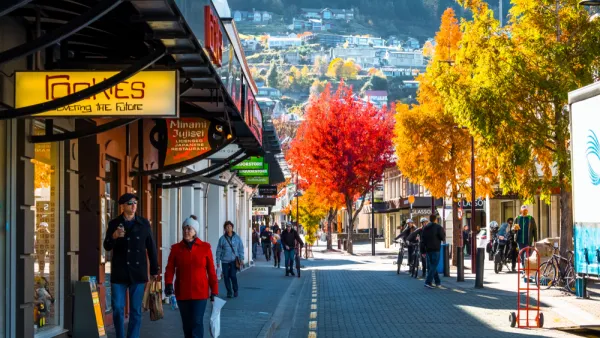Whether or not the suburban shift accelerated by the pandemic continues, policymakers can implement climate resilience strategies and guide sustainable growth in both cities and exurbs.

As Joseph Kane, Mona Tong, and Jenny Schuetz write, historically, a few key factors dictate where people choose to live: “proximity to where they work, preferred amenities like school quality or climate, and connections to social networks of family and friends.”
In the last two years, “According to prevailing media narratives, the pandemic has ‘supercharged’ suburbanization rates and even hastened the death of U.S. cities.” In fact, the authors argue, “this largely continues pre-pandemic trends. Between July 1, 2020 and July 1, 2021, many core urban counties (those home to the largest city within a metro area) continued to experience greater population losses than their neighboring suburban counties.”
Regional leaders, the authors argue, should avoid kneejerk reactions and “take a step back and recognize the uncertainty and complexity surrounding them—including the need to better analyze and assess their region’s evolving concerns.”
Whether the reaction to the pandemic is a short-term blip or longer-term pattern, it has not reduced our collective need for greater resilience—supporting our ability to live in safe, affordable, and climate-friendly communities. That means having smaller, more affordable housing, which allows workers at all income levels to live close to jobs and amenities.
The authors conclude that “In light of these unknowns, post-pandemic planning should focus on baking in more flexibility and best practices into our land use plans to prepare us for both potential future spikes in housing demand and the general long-term trend of increasing suburban and exurban population growth.”
FULL STORY: Pandemic-fueled suburban growth doesn’t mean we should abandon climate resiliency

Analysis: Cybertruck Fatality Rate Far Exceeds That of Ford Pinto
The Tesla Cybertruck was recalled seven times last year.

National Parks Layoffs Will Cause Communities to Lose Billions
Thousands of essential park workers were laid off this week, just before the busy spring break season.

Retro-silient?: America’s First “Eco-burb,” The Woodlands Turns 50
A master-planned community north of Houston offers lessons on green infrastructure and resilient design, but falls short of its founder’s lofty affordability and walkability goals.

Test News Post 1
This is a summary

Analysis: Cybertruck Fatality Rate Far Exceeds That of Ford Pinto
The Tesla Cybertruck was recalled seven times last year.

Test News Headline 46
Test for the image on the front page.
Urban Design for Planners 1: Software Tools
This six-course series explores essential urban design concepts using open source software and equips planners with the tools they need to participate fully in the urban design process.
Planning for Universal Design
Learn the tools for implementing Universal Design in planning regulations.
EMC Planning Group, Inc.
Planetizen
Planetizen
Mpact (formerly Rail~Volution)
Great Falls Development Authority, Inc.
HUDs Office of Policy Development and Research
NYU Wagner Graduate School of Public Service




























